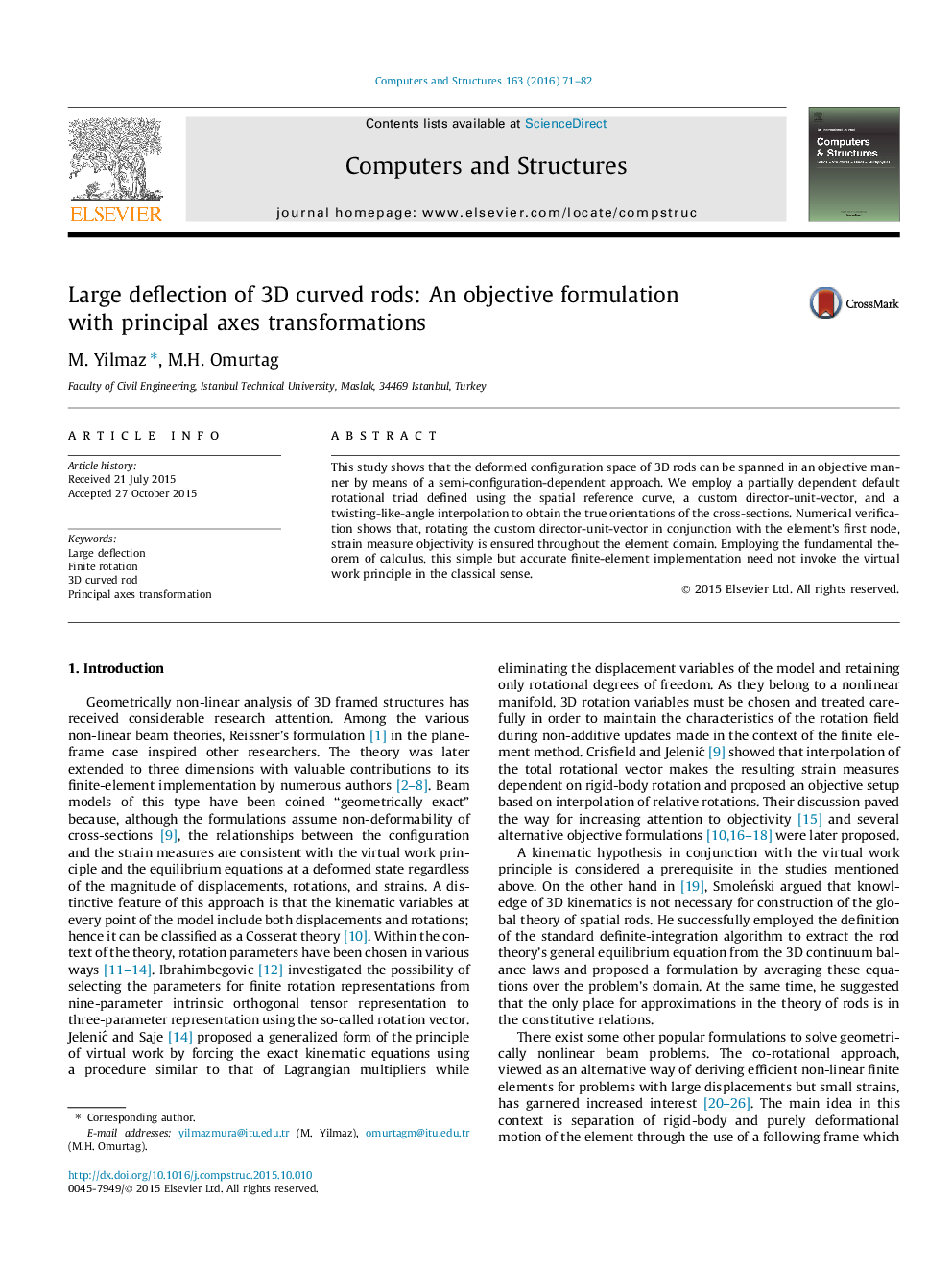| Article ID | Journal | Published Year | Pages | File Type |
|---|---|---|---|---|
| 510278 | Computers & Structures | 2016 | 12 Pages |
•Definition of the finite rotational transformation between configurations is novel.•A general section triad and its relation with the Frenet–Serret frame is presented.•Objectivity of stain measures is sustained throughout the element.•Equilibrium equations are obtained with a fixed-point approach.•Extraction of rotational parameters from a rotation matrix is avoided.
This study shows that the deformed configuration space of 3D rods can be spanned in an objective manner by means of a semi-configuration-dependent approach. We employ a partially dependent default rotational triad defined using the spatial reference curve, a custom director-unit-vector, and a twisting-like-angle interpolation to obtain the true orientations of the cross-sections. Numerical verification shows that, rotating the custom director-unit-vector in conjunction with the element’s first node, strain measure objectivity is ensured throughout the element domain. Employing the fundamental theorem of calculus, this simple but accurate finite-element implementation need not invoke the virtual work principle in the classical sense.
